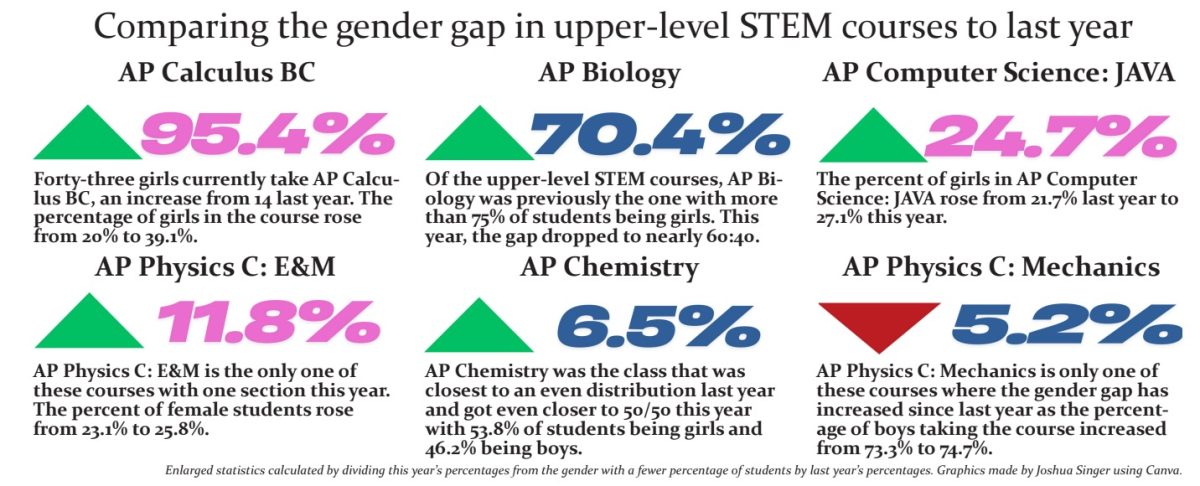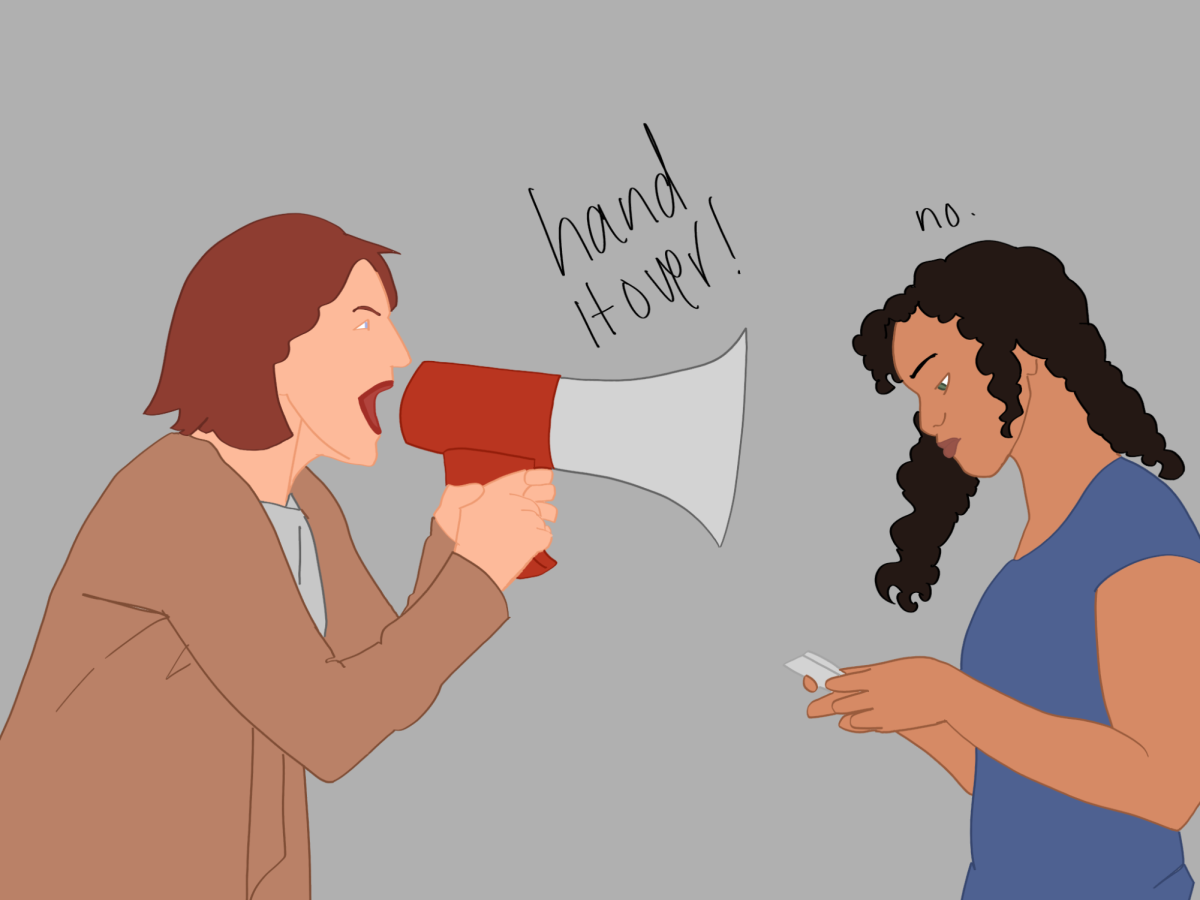While our classrooms are advertised as attentive and collaborative spaces for students and teachers, the unfortunate reality is that they have become quite the opposite.
The widespread use of cellular devices is having a major impact on student engagement. MCPS created a cell phone policy that WJ supposedly heavily implemented this year, but you can still see that these new policies rarely work fully in classrooms.
If you walk into any class at WJ, you will likely find a good portion of the students hiding their phones underneath their desks or not bothering to hide them at all. This uninterest in classes completely diminishes students’ educational progression.
“I don’t think classroom engagement has changed much over my years at WJ, it’s been relatively the same due to all the electronic devices,” senior Nolan Ross said.
Yet, from 2015 to 2023, students’ GPAs at WJ have increased significantly. In 2015, only 38% of students achieved a weighted GPA of 4.01 and above. Now, 58% of students are at or beyond this threshold..
While these statistics seem to point towards what would be an overwhelming increase in classroom engagement, they don’t tell the whole story. Instead, they could merely reflect grade inflation here at WJ. The GPA numbers look great, but MCPS is one of the few counties that implemented a 50% rule, so our grades are higher than those of other counties.
Many teachers are fighting declining classroom engagement. To combat this, teachers such as Kiara Campbell (an ASL teacher) have created ¨Fun Friday¨ games for her ASL students to play that recap what they have learned while also incorporating an exciting environment for the students.
Long-time tenured AP Human Geography and AP World History teacher Christopher Merrill believes that the decline in classroom engagement is a sign that both teachers and students need to improve.
“If students aren’t engaging, it has a negative impact on our learning environment,” Merrill said. “I think cellphones are a huge distraction. I would like my students to meet me halfway, I’m going to be prepared for them but I want them to be prepared for me.”
Merrill has explained to his students that he simply wants them to stay off their phones and give him their full attention. He puts in hard work to make class engaging, but for class to be engaging, he needs the students to play their part as well.
The problem is not solely due to electronics. Teachers must work hard to combat this decline in attention.
“Teachers have to prepare things that are engaging,” Merrill said. “If you are just lecturing the whole time, that’s boring.”
Classroom engagement is one of the most important factors in students’ success, so a more realistic and effective solution must exist.
Potential solutions to poor classroom engagement include short periods where students could use their phones. I have seen this work in many classrooms, but specifically in Elizabeth Muehl’s class. Once students got this phone time, rarely would anyone pull out their phones again until class was over.
Another option would be to include interactive learning experiences more frequently. Hands-on games or competitions that can test students’ knowledge of the curriculum increase class participation and morale. Apps such as Kahoot, Blooket, and Quizzizz are engaging for students and bring back the learning fun.









